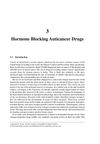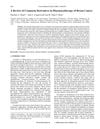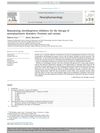Effects of Aromatase Inhibitors on Human Osteoblast and Osteoblast-Like Cells: A Possible Androgenic Bone Protective Effect Induced by Exemestane
December 2006
in “
Bone
”
TLDR Exemestane may protect bones by stimulating osteoblast growth through androgen-related pathways.
The study investigated the effects of aromatase inhibitors (AIs) on human osteoblasts, focusing on exemestane (EXE), a steroidal AI, and its potential bone-protective effects. Using human osteoblast cell lines, the research found that EXE significantly increased cell proliferation and alkaline phosphatase activity in certain cell lines, suggesting androgenic bone protective effects. The study highlighted that EXE's effects were mediated through both androgen receptor (AR) dependent and independent pathways. In contrast, non-steroidal AIs like aminoglutethimide (AGM) reduced cell numbers, and Aromatase Inhibitor I (AI-I) had no effect. The findings suggested that EXE might offer protective benefits to bone tissues, potentially through its androgenic actions, although the detailed mechanisms remained unclear.




